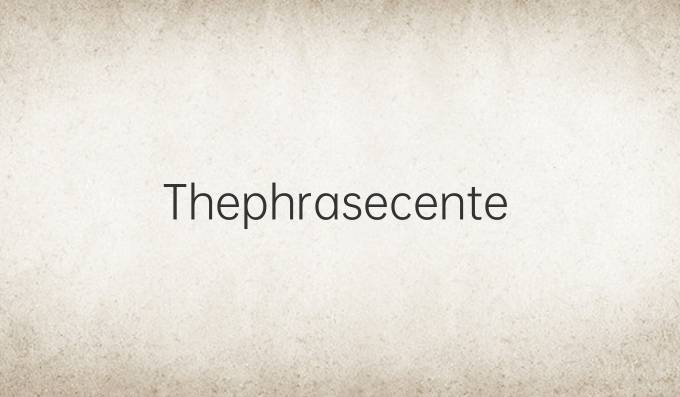
4007-702-802
Follow us on:



本文来源:ManLang 发布时间:2024-03-20 分享:

Abstra: In the world of digital marketing, search engine marketing (SEM) and search engine optimization (SEO) play a crucial role in driving organic traffic and improving visibility in search engine results pages. This article explores the concept of being "centered around SEM/SEO" and provides insights on optimizing SEM strategies for success. It discusses the importance of SEM/SEO, the key elements of successful SEM campaigns, the role of content in enhancing SEO, and the importance of tracking and analyzing data for continuous improvement.
Search engine marketing (SEM) and search engine optimization (SEO) are two fundamental components of any successful digital marketing strategy. SEM involves promoting a website through paid advertising on search engines, while SEO focuses on optimizing the website to improve its visibility organically. Both SEM and SEO help businesses increase their online presence, attra more targeted traffic, and boost conversions.

SEM allows businesses to reach their target audience faster, as paid advertising appears prominently in search results. Meanwhile, SEO helps improve organic rankings, making it more likely for potential customers to find a website when they search for relevant keywords. While SEM provides immediate results, SEO provides long-term benefits by increasing organic traffic and establishing credibility.
By having a strong presence in search engine results pages, businesses can gain a competitive edge, increase brand awareness, and drive more qualified leads. The integration of SEM and SEO is essential for maximizing visibility and driving sustainable growth.
Creating effeive SEM campaigns requires careful planning and execution. Several key elements contribute to the success of SEM campaigns:
Keyword Research: Thorough keyword research enables businesses to identify the most relevant and high-performing keywords. This includes understanding search volume, competition, and user intent. Keyword research forms the foundation of SEM campaigns, allowing businesses to target the right audience.
Compelling Ad Copy: Writing compelling ad copy is crucial to attra users' attention and entice them to click on the ad. Ad copy should highlight unique selling propositions, incorporate keywords, and have a clear call-to-aion.
Landing Page Optimization: A well-optimized landing page ensures that visitors have a seamless and relevant experience after clicking on an ad. Landing pages should align with the ad copy, have persuasive content, and strong calls-to-aion to drive conversions.
Budget Management: Effeive budget management involves allocating resources to the most valuable keywords and continuously monitoring and adjusting bids to maximize ROI.
Ad Testing and Optimization: Regularly testing and optimizing ad campaigns is crucial for improving performance. This includes A/B testing ad variations, adjusting targeting parameters, and analyzing data to refine and optimize the campaign.
While SEM focuses on paid advertising, search engine optimization (SEO) revolves around organic rankings. One of the key elements of successful SEO is creating high-quality and relevant content. Content plays a significant role in enhancing SEO in multiple ways:
Keyword Optimization: By incorporating relevant keywords naturally within the content, businesses can improve their website's visibility for specific search queries.
Informational and Engaging Content: Providing valuable and engaging content increases the likelihood of attraing organic backlinks and social shares, which further enhances SEO. High-quality content also improves user experience and encourages longer website visits.
Optimized Meta Tags: Well-written meta tags, including title tags and meta descriptions, provide search engines with clear and concise information about a webpage's content. Optimizing meta tags improves click-through rates and overall SEO performance.
Schema Markup: Implementing schema markup helps search engines understand the content and struure of a webpage. This can enhance visibility in rich snippets and improve click-through rates.
Tracking and analyzing data is crucial for ensuring the success of SEM/SEO campaigns and optimizing strategies for continuous improvement:
Conversion Tracking: Setting up conversion tracking allows businesses to measure and analyze the effeiveness of their SEM campaigns. Tracking conversions enables businesses to attribute revenue or leads to specific keywords or ads, helping optimize budget and focus efforts on the most profitable campaigns.
Web Analytics: Utilizing web analytics tools provides valuable insights into website performance, user behavior, and conversion rates. Analyzing this data helps identify areas for improvement and optimize both SEM and SEO strategies.
A/B Testing: Conduing A/B tests enables businesses to compare different versions of ads, landing pages, or website elements. A/B testing provides valuable data to refine and optimize campaigns, improving overall performance and ROI.
Summary: In the competitive digital landscape, being "centered around SEM/SEO" is essential for businesses to achieve success. By understanding the importance of SEM/SEO, mastering key elements of successful SEM campaigns, leveraging the power of content for SEO, and continuously tracking and analyzing data, businesses can optimize their search engine marketing strategies, increase visibility, and drive sustainable growth.
猜您感兴趣的内容
Maximizing Your Reach: Effeive SEM Marketing Strategies for Hangzhou
2023-12-16Building CrossBorder Websites: Strategies for Effeive International Online Presence
2025-02-05Mastering the Art of Content Marketing: Strategies to Flourish in the Digital Landscape
2024-02-05Understanding Content Marketing: A Comprehensive Guide to Engaging and Effeive Strategies for Succes
2024-09-07Efficient SEM Account Management: Empowering Your Business Growth
2024-07-23Maximizing Online Visibility: Innovative Strategies for Effeive Search Engine Marketing in a Competi
2025-02-22Outsourcing Keyword Optimization: Streamlining Your SEO Strategy
2024-07-30Unlocking the Power of WordofMouth: Innovative Strategies for Effeive KOL Marketing and Grassroots I
2024-12-15您也许还感兴趣的内容
Leveraging WeChat Web Development for Enhanced User Engagement and Interaive Experiences
2025-01-23Unlocking the Power of SceneBased Content Marketing: Strategies for Engaging Audiences in the Modern
2025-01-13Mastering the Art of Content Marketing: A Step-by-Step Guide
2024-03-25Unlocking Growth: Innovative Strategies for Effeive Digital Marketing and Traffic Generation by Your
2025-01-17Baidu PPC Management Services: Let Us Handle Your Advertising Campaigns
2024-04-15Unlocking SEO Success: Key Strategies for Effeive Optimization
2025-01-28